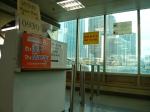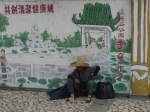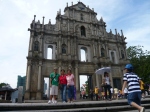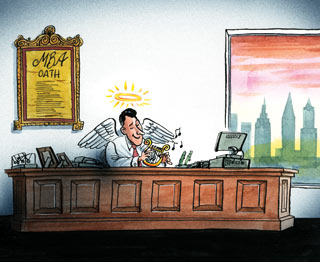Today’s Philippine revolutionary left has failed because it has not captured the people’s imagination to be self-reliant, self-respecting and empowered Filipinos who can take charge of themselves. These leftist organizations often complain about every little thing without offering a concrete alternative. It incubates a culture of dependency and of entitlement. It does not empower the people it vowed to serve. It has in its own dirty ways, impoverished the poor- making the poor poorer by not giving them respect, dignity and hope.
Fortunately, social activism is now transformed to a more palatable, more positive, genuinely pro-people and pro-environment mold. This type of activism is called Social Entrepreneurship, and the activists the social entrepreneurs.
A social entrepreneur recognizes a social problem and uses entrepreneurial (meaning game-changing, novel, innovative and sometimes risky) principles to organize, create and manage a venture to achieve social change. Whereas a business entrepreneur typically measures performance in profit and return, a social entrepreneur focuses on creating social capital. The aim of social entrepreneurship is to further social and environmental goals.
“Social entrepreneurs identify resources where people only see problems. They view the villagers as the solution, not the passive beneficiary. They begin with the assumption of competence and unleash resources in the communities they’re serving.”
David Bornstein, author of How to Change the World: Social Entrepreneurs and the Power of New Ideas
If you believe you can make a difference in this world, then maybe social entrepreneuership is the way to go. There are many ways to boost your social entreprenurial spirit and here is a shortlist of organizations that I currently find useful and interesting:
1. Foundation for Youth Social Entreprenuership. FYSE hosts the Social Venture Academy, an international bootcamp on social entreprenuership that focuses on Asia. Asian Social Venture Academy recruits the 200 brightest and most daring young leaders (ages 20-35 years old) from around Asia and globally to work alongside social entrepreneurs on their challenges and ventures during a powerful four-day social entrepreneurship education program. This event will happen in Hongkong on 19-22 May 2011. Registration fee is USD 350 not including meals and accommodation. Deadline for application is on 15 February 2011. If you find the registration fee prohibitive, then tap on your entreprenurial skills to raise the fund. Here is a helpful link that can help you get started. Remember: social entrepreneurs do not believe in free lunch. We need to earn our keep and not depend on dole outs or entitlements.
2. Students In Free Enterprise. SIFE is an international non-profit organization that works with leaders in business and higher education to mobilize university students to make a difference in their communities while developing the skills to become socially responsible business leaders. It hosts the annual SIFE World Cup where SIFE teams from all over the world shares their project’s impact to their communities. This year’s SIFE World Cup will be held in Kuala Lumpur, Malaysia on 3-5 October 2011. If you are a student, a teacher or an entrepreneur and you want to work with your community, visit Pilipinas SIFE and learn how you can get involved.
3. Lastly, I just signed up for the 2011 Social Entrepreneur Empowerment Series. It has a fantastic lineup of bestselling authors, visionary leaders and conscious business experts, all sharing their key insights for FREE. Their mission is to inspire and empower at least 20,000 social entrepreneurs with the mindset shifts and tangible business skills needed to make a truly remarkable positive impact in the world.











 I am in no way connected to, or friends with the people who are behind this revolutionary initiative. At least not yet. But I am an avid observer and a silent supporter, ever since I’ve learned of their first
I am in no way connected to, or friends with the people who are behind this revolutionary initiative. At least not yet. But I am an avid observer and a silent supporter, ever since I’ve learned of their first 
